PreNitLPC® for High-Speed Vacuum Carburizing plus Optimum Penetration
PreNitLPC® is a patented pre-nitriding option for low pressure carburizing. PreNitLPC improves cycle times even up to 49% compared to regular vacuum carburizing furnaces and broadens the applications for vacuum carburizing by using higher carburizing temperatures.
This technology saves process costs by reducing the carburizing cycle time and reducing the consumption of process gases. PreNitLPC® is a unique process offering total value in both cost of operation & process efficiency.
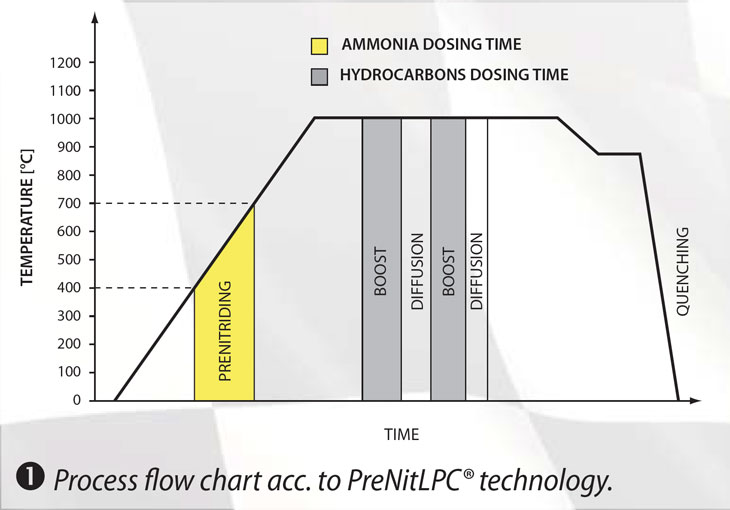

A pre-nitriding option for low pressure vacuum carburizing furnace operations, PreNitLPC® broadens the applications for LPC Vacuum Carburizing by utilizing higher carburizing temperatures. PreNitLPC® is a modern, fast and economical addition to our standard low pressure carburizing system that enhances the process by significantly reducing cycle times.
The high temperature of the process increases the value of the diffusion coefficient, leading to a significant reduction of the carburizing cycle time. The layers, having been produced at higher temperatures during the pre-nitriding phase, demonstrate strength properties similar to work that has been conventionally carburized at lower temperatures. This technology saves process costs by reducing the carburizing cycle time and reducing the consumption of process gases (C2H2, C2H4, H2, NH3).
Advantages
- Greatly reduced carburizing cycle time
- Lower process cost
- No internal oxidation
- Excellent uniformity and repeatability
- Optimum carbon penetration
- Very low consumption of carburizing gases
- No CO2 emissions, Environmentally-friendly
- Purity of process because of multicomponent carburizing gases mixture (C2H2, C2H4, H2)
- Excellent carbon penetration when carburizing densely packed loads & complex shaped workpieces or blind holes (diesel engine nozzles) parts
- Better quality thanks to no intergranular oxidation (No IGO) & precise case uniformity
- Simplicity of carburizing of Aircraft & Alloy Steels i.e.: Pyrowear® Alloy 57, M-50 NIL, SAE 9310, Ferrium C61 alloy etc.
- Compatible with NADCAP
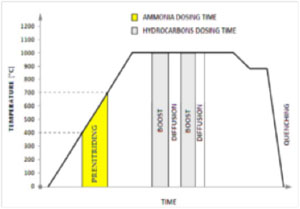
- A pre-nitriding option for low pressure vacuum carburizing PreNitLPC® broadens the applications for LPC Vacuum Carburizing by utilizing higher carburizing temperatures. PreNitLPC® is a modern, fast and economical addition to our standard low pressure carburizing system that enhances the process by significantly reducing cycle times.
- Through dosing of the nitrogen carrier during controlled heat up ramp, the furnace can run at higher temperatures (1000°C/1800°F and above), while maintaining a fine grain structure within the case. The strength properties are similar to work that has been conventionally carburized at lower temperatures.
- This technology saves process costs by reducing the carburizing cycle time and reducing the consumption of process gases (C2H2, C2H4, H2, NH3) as measured in liters and not, as in the case of conventional technologies, in cubic meters per hour. PreNitLPC® is a unique process offering total value in both cost of operation & process efficiency.
- Patent No.: EP 1558780 & EP 1558781, Patent No.: US 7,513,958 & US 7,550,049
Technical Key Features
The following demonstrates how the PreNitLPC® technology option improves the quality and efficiency of vacuum carburizing:
- High-temperature process, up to 1050°C (1900°F) maintaining a fine-grained structure
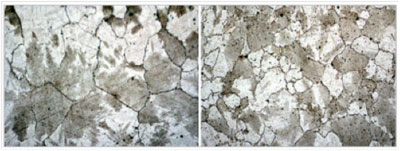
Fig. 1 Case grain diameter comparison after vacuum carburizing process for 18CrNiMo7-6 steel, correlated to the temperature 920°C (1650°F),1000°C (1800°F) and applied technology LPC, PreNitLPC.
- Increased the speed of case growth
- Reduction of carburizing cycle time and consequently significant reduction of costs
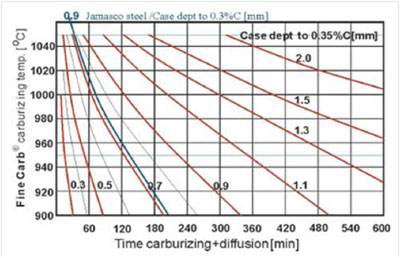
Fig. 2 Approximate times of LPC carburizing for 16MnCr5 steel depending on required temperature and ECD.
- Lower content of Retained Austenite & lower Carbide-forming ability while maintaining not reduced, useful mechanical properties
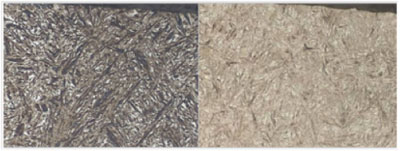
Fig. 3 Retained Austenite content in comparison, after vacuum carburizing process for 18CrNiMo7-6 steel, correlated to the temperature 920°C (1650°F), 1050°C (1900°F) and applied technology LPC, PreNitLPC.

Fig. 4 Lower Carbide-forming ability in comparison, after vacuum carburizing process for 18CrNiMo7-6 steel, correlated to the temperature 920°C (1650°F),1050°C (1900°F) and applied technology LPC, PreNitLPC®.
- Designed for the typical Case Hardening Steels
Economical Key Features
- The greater case depth, the greater time reduction
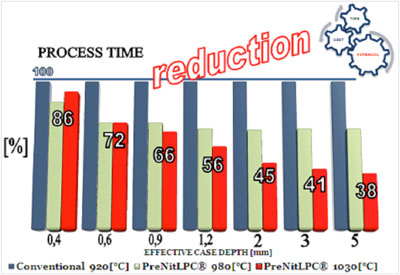
Fig. 5 Total process time duration (from loading till unloading the charge from the furnace) when carburizing and oil quenched parts made of 16MnCr5 steel in comparison of applied technology and the temperature and case depth. The reference technology (100%) is conventional carburizing using an endothermic atmosphere & oil quench at 920°C (1650°F). The reduction range depends on the applied temperature used in PreNitLPC® technology.
- The greater case depth, the greater utility costs reduction
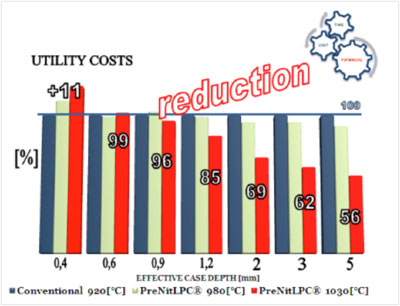
Fig. 6 Utility costs (electricity, carburizing gases) of total process (from loading till unloading the charge from the furnace) when carburizing and oil quenched parts made of 16MnCr5 steel in comparison of applied technology and the temperature and case depth. The reference technology is conventional carburizing using endothermic atmosphere & oil quench at 920°C (1650°F). The reduction range depends on the applied temperature according to PreNitLPC®technology.
- The greater case depth, the greater profits

Fig. 7 Possible increase in equipment profitability evaluation based on the time and utility cost reduction when carburizing using PreNitLPC® technology compared with controlled-atmosphere carburizing.
Vacuum Furnace Processes
Fine Carb®: Vacuum Carburizing High Pressure Gas Quench High Vacuum Furnaces PreNit: High Speed Vacuum Carburizing Vacuum Brazing: Advanced Front Loading Gas Nitriding with ZeroFLow® FURNACE/PLUS Vacuum Circuit Breaker Brazing
Specifications Subject to Change without Notice




